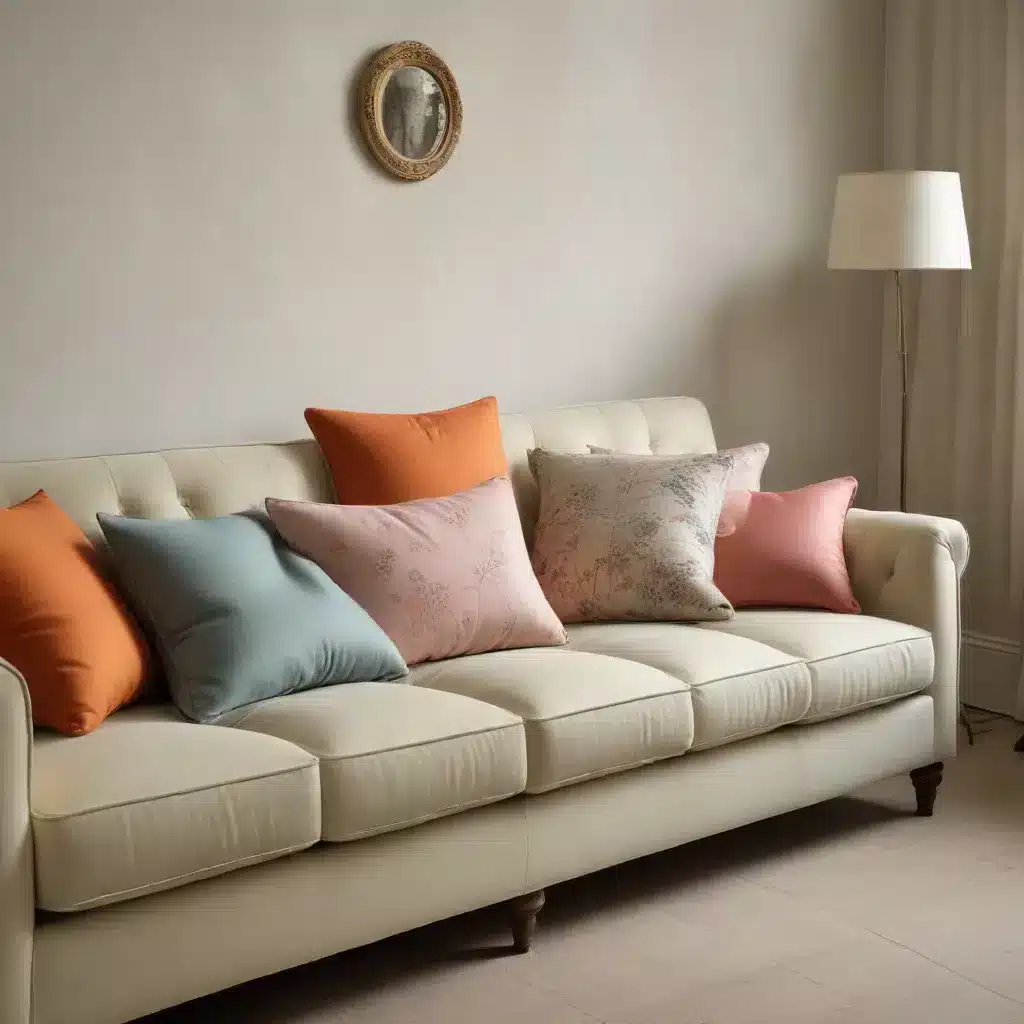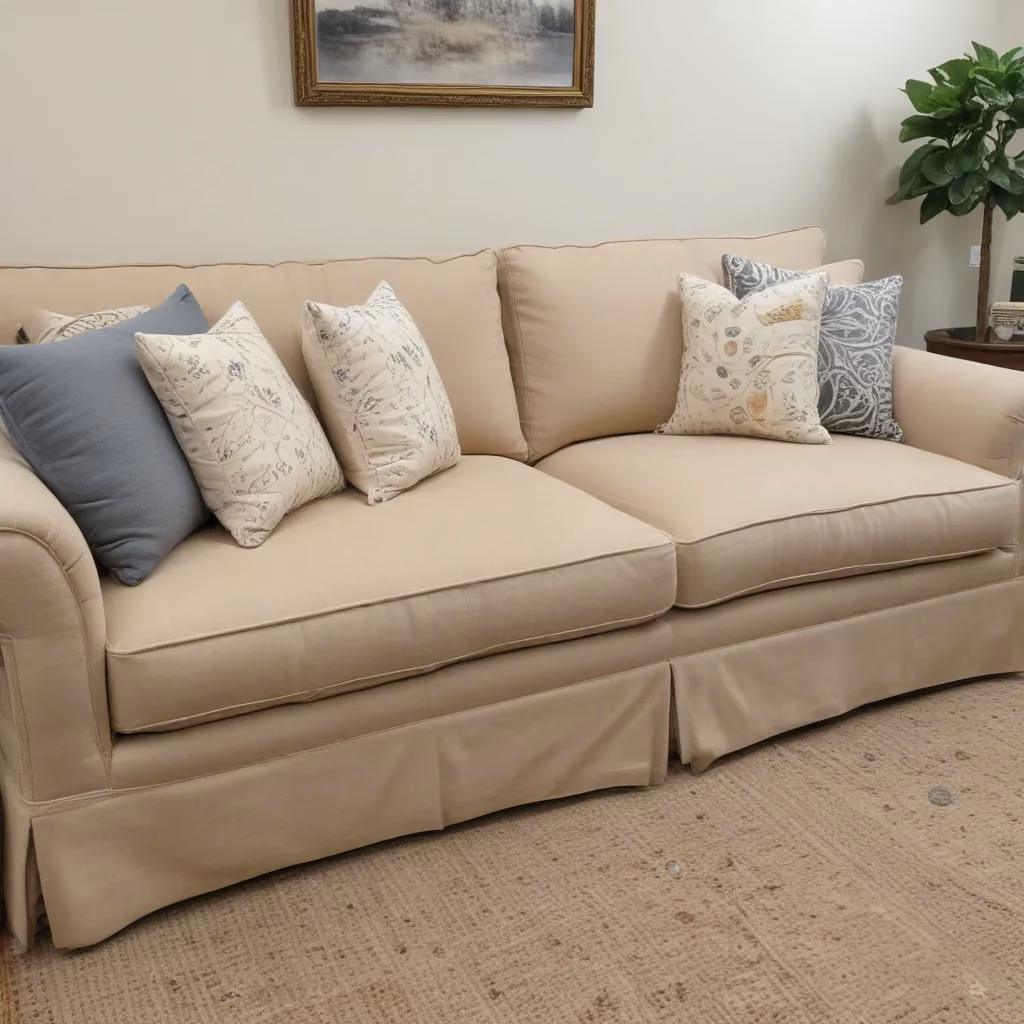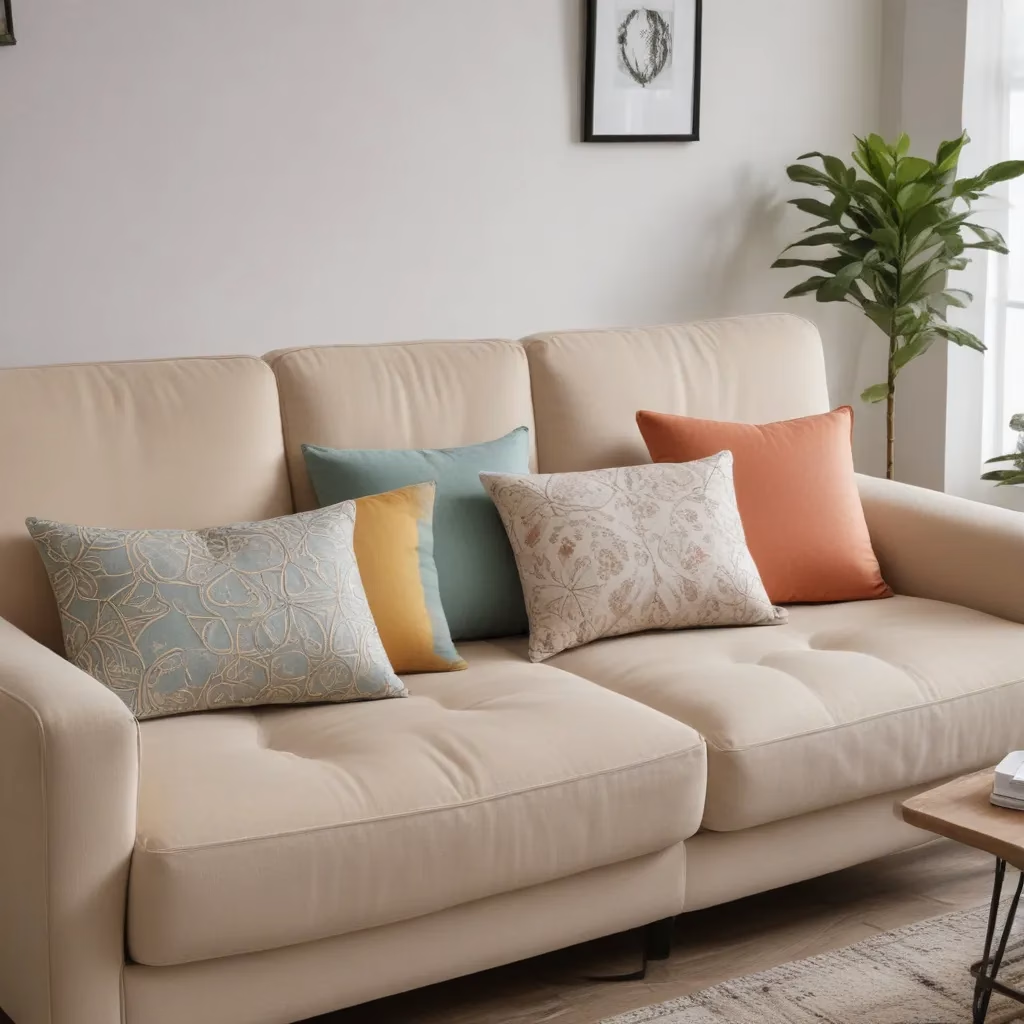
Understanding the Impact of Fabric Choice
When it comes to selecting the perfect sofa for your living space, the fabric choice plays a crucial role in tying together your entire interior design. As a furniture specialist with years of experience, I’ve seen firsthand how the right fabric can transform a room, while the wrong choice can disrupt the harmony of your carefully curated decor.
The fabric of your sofa is more than just a covering; it’s a statement piece that can set the tone for your entire living area. It’s the texture you feel when you sit down, the color that catches your eye when you enter the room, and often the largest single element of color in your space. That’s why it’s so important to choose wisely.
Over the years, I’ve guided countless homeowners through the process of selecting sofa fabrics. I’ve seen the joy on their faces when they find that perfect match, and I’ve also witnessed the disappointment when a fabric falls short of expectations. Let me share some insights that will help you make an informed decision that you’ll be happy with for years to come.
Considering Your Lifestyle
Before diving into color palettes and patterns, it’s essential to think about how you live. Your lifestyle should be the foundation of your fabric choice. Ask yourself:
- Do you have children or pets?
- Do you often entertain guests?
- How much direct sunlight does your living room receive?
These questions might seem simple, but they’re fundamental to choosing a fabric that will stand the test of time. For instance, if you have a busy household with kids and pets, you’ll want to prioritize durability and stain resistance. In this case, I often recommend performance fabrics that can withstand spills and heavy use.
On the other hand, if your sofa will be in a formal living room that’s used less frequently, you might opt for more delicate fabrics like silk or velvet. These luxurious options can add a touch of elegance to your space, but they require more careful maintenance.
Remember, there’s no one-size-fits-all solution. Your sofa should be as unique as your lifestyle, and the fabric you choose should reflect that.
The Role of Color in Fabric Selection
Color is perhaps the most immediate and impactful aspect of your sofa fabric choice. It can dramatically influence the mood and perception of your space. When selecting a color, consider the following:
- The existing color scheme of your room
- The amount of natural light the space receives
- Your personal color preferences and how they align with current design trends
In my experience, neutral colors like beige, gray, and taupe are versatile choices that can adapt to changing decor. They provide a blank canvas that allows you to experiment with colorful accessories and artwork. However, don’t be afraid to go bold if that aligns with your style. A vibrant blue or rich emerald green sofa can become a stunning focal point in an otherwise neutral room.
It’s also worth considering the psychological effects of color. Cool tones like blues and greens can create a calming atmosphere, while warm hues like reds and oranges can energize a space. Think about the mood you want to create in your living area and choose your fabric color accordingly.
Lastly, remember that colors can look different under various lighting conditions. Always view fabric samples in your home, both during the day and at night, to ensure you’re happy with how the color appears in your specific space.
Texture: The Unsung Hero of Fabric Selection
While color often takes center stage, texture is an equally important factor in fabric selection. The texture of your sofa fabric can add depth and interest to your room, even if you opt for a neutral color palette.
Smooth, sleek fabrics like leather or microfiber can lend a modern, sophisticated look to your space. They’re also easy to clean, making them practical choices for many households. On the other hand, nubby textures like bouclé or tweed can add warmth and coziness, perfect for creating an inviting atmosphere.
I often advise my clients to mix textures within their living spaces. For example, if you have smooth wooden floors and sleek metal accents, a sofa with a plush, textured fabric can provide a pleasing contrast. This interplay of textures adds visual interest and helps create a more layered, sophisticated look.
When considering texture, it’s also important to think about comfort. Some textures might look appealing but may not feel comfortable for extended sitting. Always test out the fabric in person if possible, or request a large swatch that you can live with for a few days before making your final decision.
Pattern: To Go Bold or Stay Subtle?
Patterns can be a powerful tool in your interior design arsenal, but they require careful consideration. A patterned sofa can become the centerpiece of your room, setting the tone for your entire design scheme. However, it’s important to strike the right balance to avoid overwhelming your space.
If you’re drawn to patterns, consider the scale of the pattern in relation to your room size. Large, bold patterns can make a statement in spacious rooms but might feel overpowering in smaller spaces. Conversely, small, intricate patterns can add subtle interest without dominating the room.
When incorporating a patterned sofa, I often suggest keeping other elements in the room more subdued. This allows the sofa to shine without creating visual chaos. Alternatively, if you prefer a more eclectic look, you can mix patterns by varying their scale and ensuring they share a common color palette.
Remember, patterns aren’t limited to florals or geometrics. Textured fabrics like herringbone or houndstooth can add a subtle pattern that provides interest without being overtly bold. These can be excellent choices if you want to add some visual intrigue while maintaining a more neutral overall look.
Durability and Maintenance: Practical Considerations
While aesthetics are important, practical considerations should not be overlooked when selecting sofa fabric. Durability and ease of maintenance can significantly impact your long-term satisfaction with your choice.
Different fabrics have varying levels of durability. Natural fibers like cotton and linen can be comfortable and breathable, but they may not stand up well to heavy use. Synthetic fibers like polyester and nylon are often more durable and resistant to staining and fading.
For households with children or pets, I often recommend performance fabrics. These are specially engineered to resist stains, odors, and wear. Many of these fabrics can be cleaned with just water, making them a practical choice for busy families.
It’s also worth considering the fabric’s resistance to fading, especially if your sofa will be placed in a sunny spot. Some fabrics, particularly natural fibers, can fade quickly when exposed to direct sunlight. If this is a concern, look for fabrics treated with UV-resistant finishes or opt for synthetic fibers that naturally resist fading.
Maintenance is another crucial factor. Some fabrics require professional cleaning, while others can be easily spot-cleaned at home. Be honest with yourself about how much time and effort you’re willing to put into maintaining your sofa. There’s no point in choosing a high-maintenance fabric if you know you won’t keep up with its care requirements.
Harmonizing with Your Overall Design Scheme
Your sofa doesn’t exist in isolation – it’s part of your larger interior design scheme. When selecting fabric, consider how it will interact with other elements in your room, including:
- Wall color and texture
- Flooring material and color
- Other furniture pieces
- Window treatments
- Artwork and accessories
The goal is to create a cohesive look that feels intentional and harmonious. This doesn’t mean everything needs to match perfectly. In fact, some contrast can add visual interest to your space. However, there should be a sense of unity in your design choices.
One approach I often recommend is to choose a sofa fabric that picks up on accent colors used elsewhere in the room. For example, if you have artwork with touches of deep blue, a sofa in a similar hue can tie the whole room together.
Alternatively, you might choose a neutral sofa fabric and use it as a backdrop for more colorful accessories. This approach allows you to change up your color scheme more easily over time without needing to replace your sofa.
Remember, your sofa is likely to be one of the largest and most used pieces of furniture in your living space. Its fabric should complement your overall design while also meeting your practical needs for comfort and durability.
The Importance of Fabric Samples
I can’t stress enough the importance of seeing and feeling fabric samples in your own space before making a final decision. What looks perfect in a showroom or online might look completely different in your home due to differences in lighting and surrounding colors.
Most reputable furniture retailers will provide fabric samples, often for free or for a small fee. Take advantage of this service. Request samples of your top choices and live with them for a few days. Observe how they look in different lighting conditions and how they feel against your skin.
Place the samples near your windows, on your floor, and next to other fabrics in your room. This will give you a better sense of how the fabric will interact with your existing decor. Don’t rush this process – it’s better to take your time and be sure about your choice than to end up with a sofa you’re not completely happy with.
Balancing Trends with Timelessness
As a furniture specialist, I’m often asked about current fabric trends. While it’s fun to stay up-to-date with the latest styles, I always advise my clients to balance trendiness with timelessness, especially for a significant investment like a sofa.
Currently, we’re seeing a trend towards natural, organic textures and colors. Linens and cotton blends in earthy tones are popular choices. There’s also a growing interest in sustainable and eco-friendly fabrics, reflecting a broader shift towards environmentally conscious design.
However, trends come and go. A sofa is typically a long-term investment, so it’s wise to choose a fabric that you’ll be happy with for years to come. This doesn’t mean you have to stick to the most conservative choices, but consider how well your fabric choice will age as trends evolve.
One strategy is to choose a relatively neutral base fabric for your sofa and incorporate trendier elements through throw pillows, blankets, or other accessories. This allows you to update your look more easily and affordably as your tastes change or new trends emerge.
Making the Final Decision
After considering all these factors, you might feel overwhelmed by the choices. Remember, there’s no absolutely perfect choice – the best fabric for your sofa is the one that meets your needs and brings you joy.
Trust your instincts. If you’re drawn to a particular fabric, there’s likely a reason. Just make sure it aligns with your practical needs as well as your aesthetic preferences.
Don’t be afraid to seek professional advice. At Sofa Spectacular, we’re always happy to guide you through the selection process, offering expert insights tailored to your specific situation.
Choosing the right sofa fabric is a blend of art and science. It requires balancing aesthetics with practicality, personal taste with design principles. But with careful consideration and the right guidance, you can select a fabric that will enhance your living space and stand the test of time.
Remember, your sofa is more than just a piece of furniture – it’s where life happens. It’s where you’ll relax after a long day, entertain friends, and create lasting memories. By choosing the right fabric, you’re not just decorating your home; you’re creating the backdrop for your life. Choose wisely, and enjoy the comfort and style of your perfectly upholstered sofa for years to come.



